News & Articles
Browse all content by date.
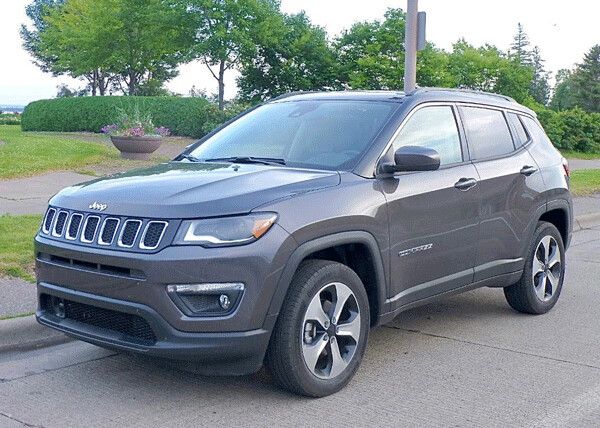
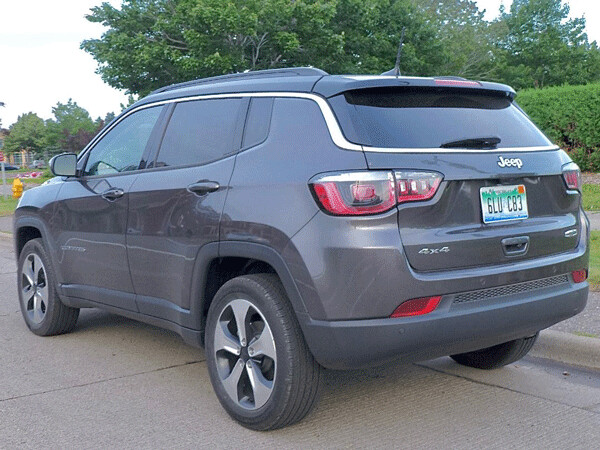
While driving a 2018 Jeep Compass for a week in Northern Minnesota recently, I quietly inscribed another chapter in the ongoing refinement of the Jeep family into my memory bank.
This time, it was as a tribute to Sergio Marchione, the automotive executive of the year for any year, or every year. Marchione died unexpectedly two weeks ago, far too young at age 66. A thoroughly engaging personality brimming with charisma, Marchione had pulled off a creative deal to take over Fiat and the bankrupt Chrysler Corporation by merging them together into FCA — Fiat-Chrysler Automobiles.
That was in 2009, and he met a couple of legal challenges to gain full control of Chrysler without spending anything. He then separated Dodge trucks into Ram, separate from Chrysler-Dodge cars, where Jeep had always been. Resolutely, he guided Ram and Jeep into being the No. 1 and 2 profit-makers for FCA, lifting both companies out of the red in less than a decade.
In the process, FCA steadily improved and refined both Ram and Jeep models, adding new models from both Fiat and Chrysler. I had the chance to talk to Marchione on a couple of occasions, and found him refreshingly direct, candid, and willing to answer any and all questions. The introduction of the Alfa Romeo Giulia and companion Stelvio SUV a year ago was a huge plus for the corporation. Driving the new Ram pickup proves it to be possibly the most refined pickup in the industry.
On the Jeep side, renovations of the entire line included an all new compact Renegade, and a companion Fiat 500X, plus an all-new Cherokee, and an all-new Compass.
Then suddenly, the alarming news came that Marchione had gone to a hospital in Zurich, Switzerland, for “shoulder surgery” but that he would not be able to return to work as FCA’s CEO. Then, suddenly again, the news came that he had died. Indications are that he had mostly kept secret that his shoulder surgery was to treat a soft-tissue sarcoma, an invasive type of cancer in his right shoulder. During the surgery, Marchione suffered an embolism — a blood clot — that caused him to fall into a coma. He never came out of it.
All of that sad news has put FCA into some sort of a spin, with questions about the company’s future coming from everywhere. And it is into that climate that I got a Compass delivered to me for a test.
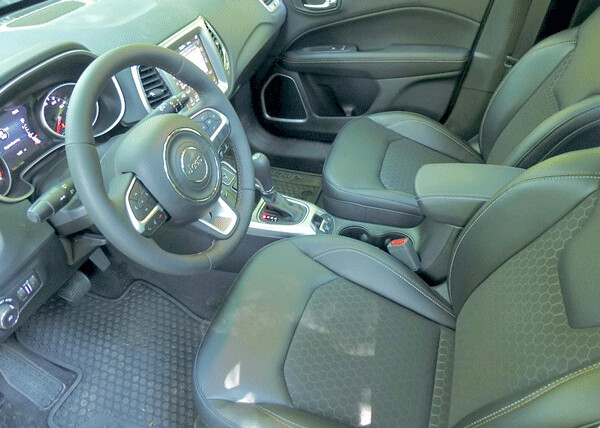
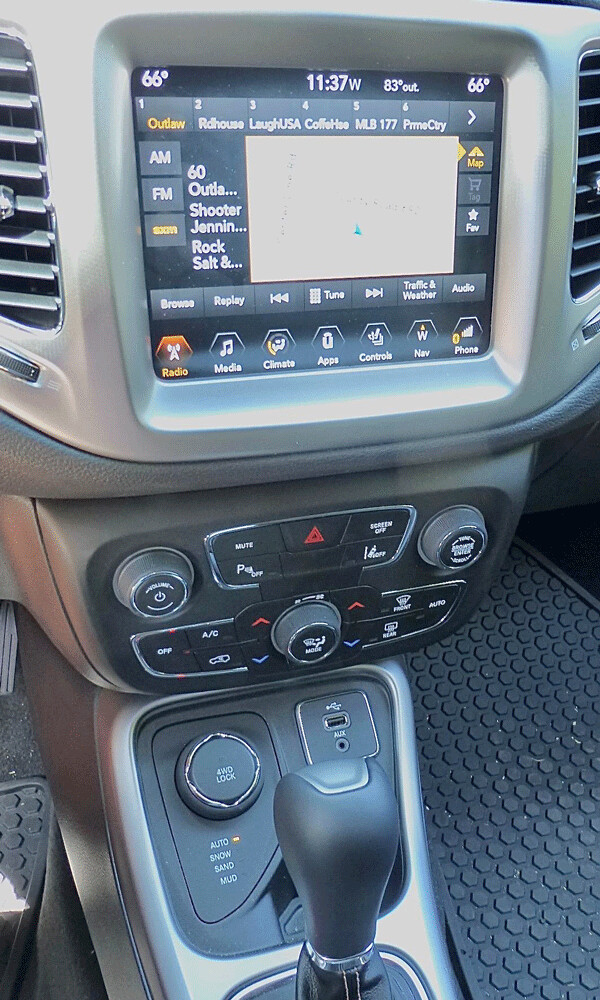
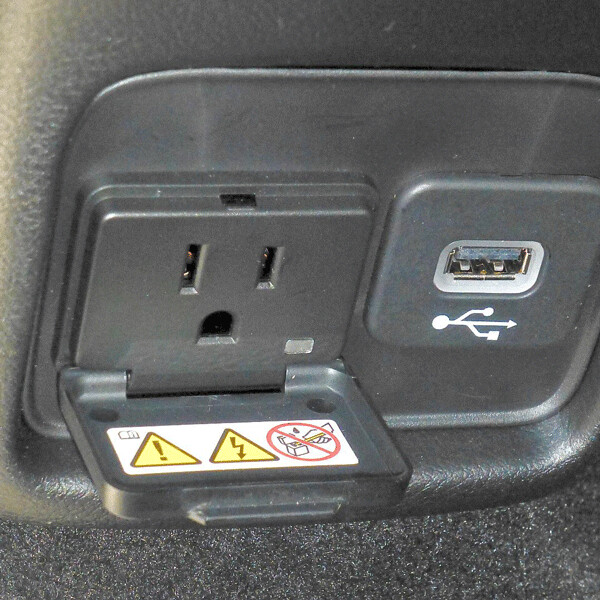
Jeeps always are fun to drive, especially if you have an area where you can do some serious off-road driving. Not necessarily rock climbing stuff, but just taking on remote woodland trails and terrain, where you’d never venture in a normal car. I guess that’s part of it: Jeeps are not normal.
Decades ago, I really didn’t like Jeeps, and wondered why those who did, did. They were rattly, suffered from frequent maintenance issues, and even when new seemed on the verge of starting to show off their lack of refinement. Then they came up with the Cherokee, which was the first Jeep I really admired. Oh, you have to admire the Wrangler, which seemed proud to show off its World War II heritage, but only off-road.
The Cherokee came in under the Wagoneer, a large and very undependable creature that could nuisance you to the point of distraction even in a week’s time. I’ve previously relayed the story of a Grand Wagoneer I was testing in mid winter and my wife and I drove to a high school hockey game and parked about a block from the arena in Minneapolis. After the game, we were walking back and I heard a car horn honking, constantly, without interruption. I mentioned to Joan how some poor so and so had his horn stuck on a 10-below zero night. We turned the corner, and it was our Wagoneer test vehicle, its horn blaring loudly. We pulled the wires to stop it, then found the battery was dead and we had to get a jump start. Afterward, I reconnected the horn wires and found it wouldn’t honk when I hit the horn, but it would honk every time I turned left!
Anyhow, the Cherokee grew into the Grand Cherokee, to make room for a smaller Cherokee, then came the rest of the family, including the Patriot, Compass, and assorted other vehicles of varying sizes.
The new Cherokee comes with three engine choices, one of which is a new 2.0-liter turbocharged 4, which is the result of a green-lighted bold move by Chrysler engineers to develop a new small engine on American soil — one of the qualifications for his Fiat operation to gain full rights to Chrysler.
The Compass, meanwhile, stands in testimony to where Jeep specifically and FCA in general have gotten under Marchione’s fine and forceful hand. Not only is the body shape and design pleasing, the interior is vastly improved, and it is now a fine place for a driver or passengers.
But the perfect example of FCA is under the hood. Chrysler and Hyundai had shared a joint venture with Mitsubishi to design a new engine just as Marchione was engineering his deal to take control of Chrysler. Hyundai’s 2.4-liter 4-cylinder won the competition among the three, and all three began using that engine. Meanwhile, Fiat came out with the new 500 subcompact, powered by a tiny 1.4-liter 4-cylinder with surprisingly sprightly power because of a turbocharger. Even in base form it was peppy, thanks to something called Multiair.
Fiat engineers had devised a method of using oil-filled tubes to fill and compress and force the intake valves to open and close, then connected it to the exhaust manifold. The free-breathing system meant that the Fiat 500’s 4 had four valves per cylinder but didn’t need dual overhead cams because the exhaust cam did double duty and negated the need for an intake cam. Impressive as it was, having been proven for years by Diesel engines and Formula 1 race engines, Fiat engineers told me it could be adapted to work on any engine.
So here I am driving the new Compass, resplendid in its Granite Crystal Metallic paint, and it is powered by a 2.4-liter 4-cylinder engine with Multiair. It has 180 horsepower and 175 foot-pounds of torque, which is adequate for a vehicle as light as the Compass.
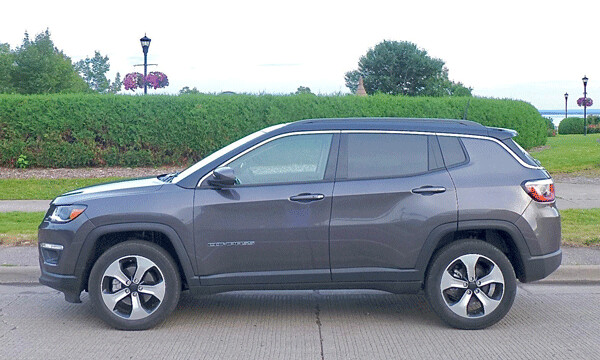
The Compass Latitude 4x4 as I tested it started at a base price of $24,395, which seems like an enormous bargain, coming as it does with that structurally solid drivetrain. But the test vehicle came loaded with $12,000 worth of options, pushing the sticker price bottom line to $36,390.
You could reduce that by excising some options, but the cold weather package, the advanced safety and lighting group, the navigation group with all its connectivity and dash screen, the popular equipment group with its power seats, remote start and auxiliary power plug-ins, and the dual-pane sunroof — all are impressive features, whether you can afford them or not.
As for that engine, there are no alternatives. Critics who might prefer neck-snapping power have complained that the Compass is underpowered, but I found it to be adequate in every instance unless you wanted to screech the tires at a stoplight. It accelerates smoothly and steadily, after its modest takeoffs. And it runs well in coordination with the new 9-speed automatic transmission.
But the overriding feeling I had while getting to know and appreciate the new Compass was that it is a vehicle that pays tribute to Sergio Marchione’s vision of a global auto industry. It has an engine that was originally designed in South Korea by Hyundai; the engine adds the innovative Multiair intake system from Fiat in Italy; and it is built in a Chrysler plant in the U.S.
As for the Compass itself? All those parts are shipped to its final assembly point — Toluca, Mexico.
You can’t beat all that to prove how global the auto industry has become. And for Sergio Marchione, born in Italy, raised in Toronto, and going back to Italy to forge two failing auto companies into one profitable one, it is a fitting tribute.
| Tweet |


